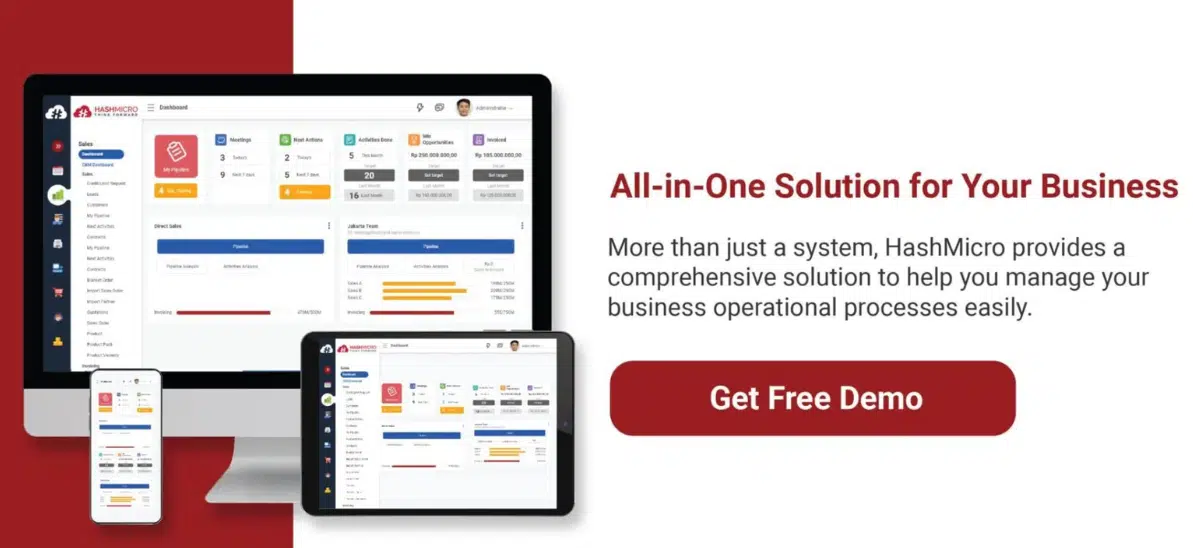Deferred tax liabilities (DTL) is a common but often misunderstood component of corporate finance. It arises when a company’s taxable income differs from its accounting income due to temporary differences in timing, such as variations in depreciation methods or revenue recognition rules.
DTLs, as a percentage of net worth, have fluctuated over time, peaking at 27.3% in 2008 and reaching 22.9% in 2023. These figures illustrate how deferred taxes can become a substantial financial liability if not properly managed.
This is where an accounting software, like HashMicro Accounting Software plays a vital role. With its robust automation features, real-time financial reporting, and seamless tax integration, HashMicro helps businesses manage deferred tax liabilities with greater accuracy and efficiency.
In this article, we’ll explore what a deferred tax liability is, why it’s a common problem for businesses, and how the right accounting technology can offer a smarter and more accurate approach to managing it.
Table of Content:
Table of Content

Key Takeaways
|
What is a Deferred Tax Liability?
Deferred tax liability is a future tax payment a company owes due to temporary differences between accounting and tax rules. It occurs when income is recognized earlier in financial reporting than in tax filings, resulting in delayed tax payments.
These timing differences are not permanent. A common example is depreciation. A business may use accelerated depreciation for tax filings and straight-line depreciation for accounting, creating a gap between taxable and accounting income.
DTLs do not involve immediate cash payments. Instead, they are accounting entries that help ensure financial reports accurately reflect the true financial position, in line with the matching principle.
Deferred tax liabilities are especially common in capital-intensive industries or companies with complex transactions. When managed properly, they reflect healthy tax planning, not financial risk.
How Is Deferred Tax Liability Calculated?
Deferred tax liability is calculated by identifying temporary differences between the carrying value of assets or liabilities in financial statements and their tax base. These differences are then multiplied by the applicable tax rate.
For example, if a company uses straight-line depreciation for accounting and accelerated depreciation for tax purposes, the accounting income will be higher in the early years. The difference in depreciation expense creates a taxable temporary difference, which forms the basis of the deferred tax liability.
The formula is:
Deferred Tax Liability = Temporary Difference × Tax Rate
It’s essential to update these calculations regularly, particularly when tax laws change or asset values are revised. Accurate calculation ensures proper financial reporting and tax compliance.
Example of Deferred Tax Liability
Imagine a company purchases machinery worth $100,000. For accounting purposes, it uses straight-line depreciation over 10 years, resulting in a $10,000 expense per year. However, for tax purposes, it applies accelerated depreciation, with $30,000 in the first year.
In the first year, the accounting income will reflect a $10,000 depreciation expense, whereas the tax report will show $30,000. This creates a temporary difference of $20,000. If the corporate tax rate is 25%, the deferred tax liability for that year would be $20,000 × 25% = $5,000.
This $5,000 represents the tax the company will need to pay in the future, as the depreciation difference reverses over time. It is recorded on the balance sheet as a deferred tax liability.
How to Manage Deferred Tax Liabilities
Deferred tax liabilities can impact a company’s financial clarity if not managed properly. To maintain accuracy and compliance, businesses should adopt a structured approach to their operations. Here are five key steps to effectively manage deferred tax liabilities:
1. Identify timing differences
Begin by pinpointing transactions that cause temporary differences between accounting and tax reporting, such as depreciation methods, revenue timing, and expense recognition. Understanding these sources helps prevent errors in tax filings and financial statements.
2. Reconcile financial and tax records regularly
Conduct routine reconciliations to ensure that differences are tracked accurately and reflected properly in both sets of records. This ensures data integrity and simplifies adjustments during audits or tax reporting.
3. Stay updated on tax regulation changes
Monitor changes in tax laws and rates, as these can directly affect the value of deferred tax liabilities and require timely adjustments. Even small updates can have significant impacts on future tax obligations.
4. Use technology to automate calculations
Implement accounting systems that support automated deferred tax tracking to reduce manual errors and improve reporting efficiency. Automation also helps with historical tracking and enables faster, more accurate decision-making.
5. Encourage cross-department collaboration
Align finance, accounting, and tax teams to ensure consistency in reporting and to handle complex scenarios more effectively. Strong collaboration reduces miscommunication and builds a shared understanding of tax implications.
By following these steps, businesses can manage deferred tax liabilities with greater confidence, reducing risk and enhancing financial transparency.
Enhance Deferred Tax Liability Management with HashMicro Accounting
Managing deferred tax liabilities can be complex, especially when businesses rely on manual spreadsheets or disconnected systems. Inaccurate tracking of timing differences and tax adjustments can lead to reporting errors, audit findings, and compliance risks.
HashMicro Accounting offers an integrated solution that simplifies deferred tax management through automation, real-time data access, and customizable financial reporting. Businesses can also request a free demo to experience firsthand how the system enhances efficiency.
With its powerful accounting engine, businesses can automatically identify and calculate temporary differences, apply correct tax rates, and generate accurate journal entries, minimizing the risk of human error.
Key features of HashMicro Accounting:
- Cash Flow Reports: Offer a detailed snapshot of incoming and outgoing cash, supporting better liquidity management and informed financial strategy.
- Forecast Budget: Enhances the budgeting process by leveraging historical financial trends and future estimates to inform more effective resource allocation.
- Budget S Curve: Displays budget consumption in an intuitive S-curve format, helping users visualize and track expenditures in relation to planned benchmarks.
- Financial Statement with Budget Comparison: Combines actual financial results with budget projections, making it easier to spot variances and evaluate fiscal health.
- Automated Currency Update: Automatically refreshes exchange rates from reliable sources, ensuring accuracy in international financial transactions.
Conclusions
Deferred tax liabilities are future tax obligations caused by timing differences between financial reporting and tax calculations. While often overlooked, they play a key role in ensuring accurate and compliant monetary statements.
With the complexity involved in tracking and calculating deferred tax, having the right tools in place is critical. HashMicro Accounting offers an integrated, automated solution that streamlines the entire process, minimizing errors, saving time, and enhancing transparency across financial operations.
To see how HashMicro can support your tax and financial management, request a free demo today and discover how automation can transform your accounting practices.
FAQ About Deferred Tax Liabilities
-
Are deferred tax liabilities a current asset?
A deferred tax asset (DTA) is an item on the financial statements that lowers future income tax expenses. On the balance sheet, DTAs are categorized under non-current assets.
-
How to record a deferred tax asset?
Make the journal entry by debiting the deferred tax asset account and crediting the income tax expense or deferred tax benefit account. On the financial statements, show the deferred tax asset on the balance sheet—usually under non-current assets—and include a breakdown of its components in the accompanying notes.
-
What is a deferred tax liability for IFRS?
A deferred tax liability arises when a company anticipates paying taxes in the future upon recovering the carrying value of an asset or liability. Conversely, a deferred tax asset is recognized when a company anticipates paying less tax upon recovery of an asset or liability, or when it has unused tax losses or tax credits available.
























































